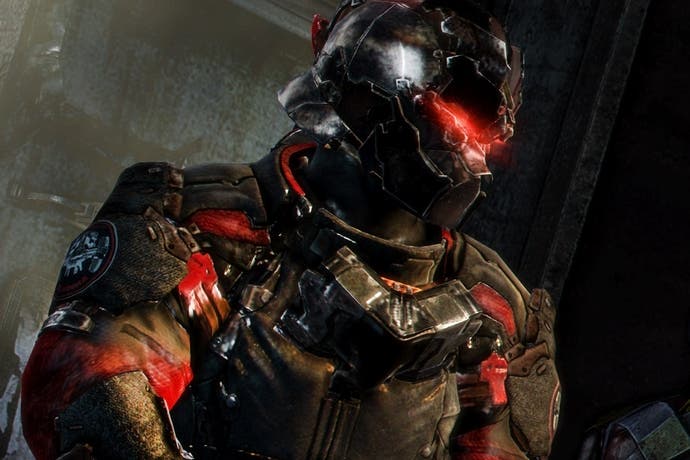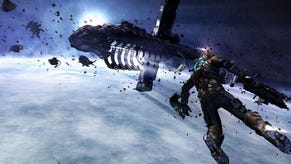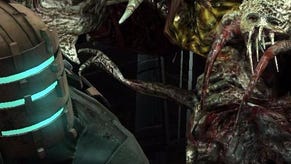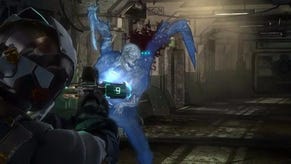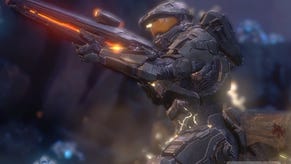Face-Off: Dead Space 3
Dead heat.
| - | Xbox 360 | PlayStation 3 |
|---|---|---|
| Disc Size | 7.7GB (disc one), 7.6GB (disc two) | 12.2GB |
| Install | 7.7GB (disc one), 7.6GB (disc two)- optional | - |
| Surround Support | Dolby Digital | Dolby Digital, 5.1LPCM, 7.1LPCM |
The Dead Space series has successfully delivered gripping survival horror across two excellent games so far, but in producing this third instalment the developers faced a serious challenge: how to push the franchise forward without simply covering old ground? Visceral Games adopts a similar 'bigger is better' approach to the one used by Capcom with its recent Resident Evil games, upping the sense of scale by introducing expansive set-pieces and more traditional shooting scenes into the mix. In many ways this more action-focused direction is a logical progression for a series which has become increasingly cinematic with each instalment.
There's a strong argument that the more action-based changes mean that the core of the survival horror experience has been slowly slipping away since the first Dead Space, but the use of some outstanding audio/visual exposition still infuses this new sequel with plenty of atmosphere during the more traditionally themed areas of the game. As Isaac carefully traverses the ruins of decaying ships in the cold dead of space, the demented screams of the Necromorphs echo from multiple directions, while the stomping soundtrack during combat quickly engenders a sense of urgency. On a visual level the use of a deferred lighting set-up brings with it an accomplished use of dynamic light and shadow that does a great job of completely immersing the player in the foreboding world Visceral Games has created.
In that respect, while the formula may be lacking in surprises and that all-important scare factor, it still provides some gripping entertainment, something that it successfully carried across to multiple platforms with seeming ease. Dead Space 3 is one of the closest multi-format projects we've seen this side of Criterion Games' Need for Speed: Most Wanted, and of course Visceral Games' own Dead Space 2 - another extremely close game across Xbox 360 and PS3. The following videos should make the point and, if they're not enough, hopefully an extensive triple-format comparison gallery will make the point.
"The PC version of Dead Space 3 has some minor enhancements, but the two console releases are essentially identical in one of the closest games we've seen."
Alternative comparisons:
In addition to an even more accomplished use of dynamic lighting compared to its predecessor, Dead Space 3 manages to make some noticeable visual improvements in other areas. The native 720p framebuffer is joined by the inclusion of a post-process anti-aliasing solution (in this case FXAA) for this latest outing, which helps to smooth out the overall presentation, whereas previous instalments featured no anti-aliasing whatsoever. As expected, there is some texture blur and visible sub-pixel shimmering on fine details as a consequence, but the dark nature of the game and the somewhat muted colour scheme means that jaggies are never a real issue. Furthermore the slight blurring of the visuals actually suits the game's graphical style fairly well and we never feel any sense of compromise with the slight hit in overall clarity.
On the PC we elected to use sub-pixel morphological anti-aliasing (SMAA), as the algorithm doesn't appear to blur the art in any noticeable way while also providing better sub-pixel coverage on long edges. Finer details have their fair share of jaggies, but the trade-off for extra image sharpness is worth it: specular highlights are more defined and the picture in general has more depth due to the extra clarity on offer.
As we've seen in previous titles developed by Visceral Games, the quality of the multi-platform conversion work is exceptional. In terms of the console versions, almost every facet of the game's graphical make-up is a match, including all the major elements such as texture quality, filtering, shadow resolution and lighting. What differences we see are mostly down to the odd rendering bug, occasional inconspicuous texture changes or slight variances in how the various elements in certain scenes interact with each other. Shadow thickness appears to vary with regards to brightness/darkness differences, and the variance in anisotropic filtering is mostly likely down to the way each platform's graphics chip renders the same effect. In one scene we also see heavily crushed lighting on the 360, perhaps owing to the developers using different high dynamic range formats for each console and leaving some light-scale variables unchanged.
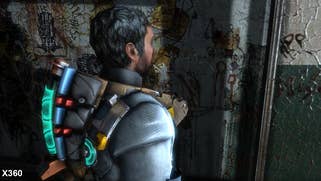

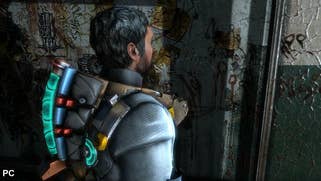

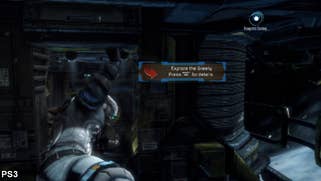
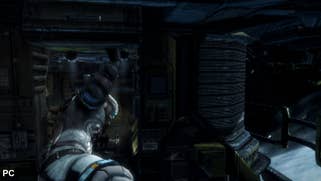
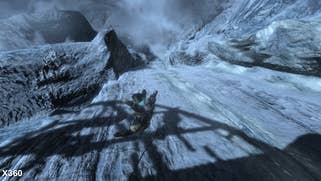
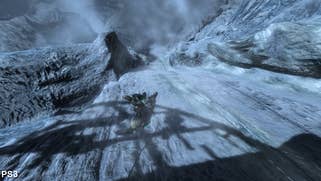
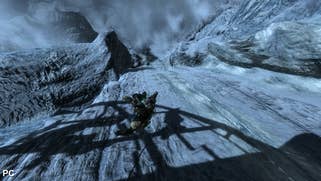




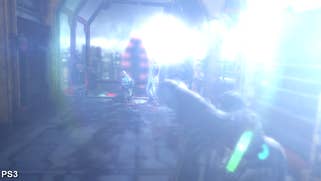
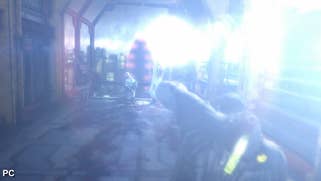
The range of visual effects work is also impressive: object blur, screen distortion and depth-of-field are used to give the game a cinematic look, and these features work well with the impressive lighting model, which sees light shafts, lens flare, and varying degrees of exposure adding both atmosphere and realism throughout the many locations on offer. The limited draw distance allows for detailed environments and an exhaustive range of effects to be used without impacting on overall image quality or performance - something which many of the latest multi-platform releases can struggle with.
Contrary to sentiments expressed by Visceral Games, PC owners do indeed get a few graphical upgrades, allowing the visuals to better scale beyond native console 720p resolution. The lifting of FXAA blur allows texture detail to shine and this is joined by a higher level of anisotropic filtering (16x on PC compared to what looks like around 4x on consoles). Screens-space ambient occlusion (SSAO) is also given a higher-precision implementation too, with the effect looking cleaner as a result.
Perhaps the only annoyance with the PC release is the bizarre inclusion of a frame-rate cap when running the game with v-sync enabled, limiting performance to 30FPS even if you have hardware capable of delivering far greater levels of fluidity - a decision that must surely be a stylistic choice rather than a bug. Similar to Dead Space 2, dropping v-sync allows you to achieve much higher frame-rates (there's no cap when v-sync is disabled) at the expense of introducing tearing - not pretty, but the dark aesthetics of the game do help to hide torn frames to a degree. The alternative is to disable v-sync in-game and enable it in the GPU control panel, or you can dig into the game's system.txt config file to affect the same changes. In any case running Dead Space 3 at 60FPS results in a more impressive visual experience and the controls are given a boost making them feel less heavy as a result.
"Bizarrely, selecting v-sync on the PC version limits frame-rate to just 30FPS, requiring some .ini or graphics card control panel tweakery to allow for smoother gameplay."
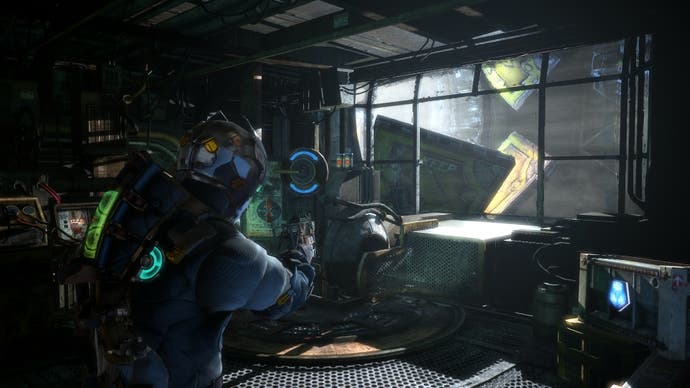
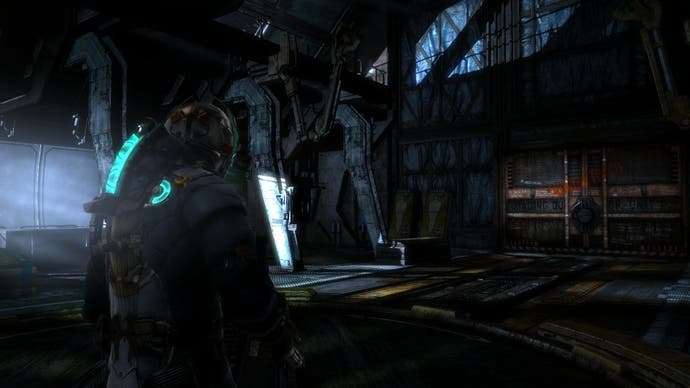

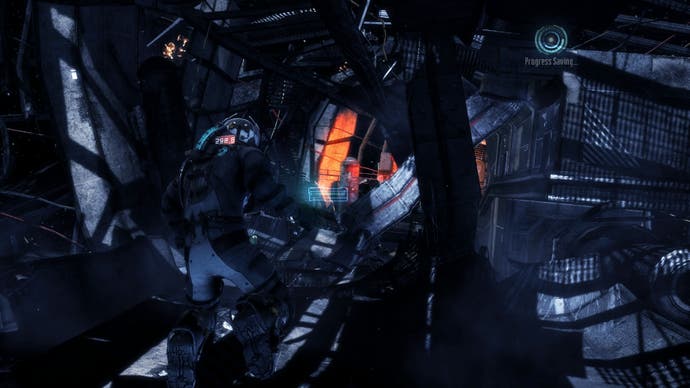
Dead Space 3: performance analysis
In terms of console performance Visceral Games has done a great job with Dead Space 3, combining practically rock-solid frame-rates with zero screen-tear on either platform. During combat the appearance of multiple enemies and a number of flashy pyrotechnics fails to impact upon performance in any noticeable way. Bar the odd frame drop or two, we are basically looking at a solid 30FPS on both consoles, meaning that gameplay and graphical fluidity remain thoroughly consistent throughout.
Like-for-like scenes also demonstrate the same impressive results, with just a mild dip in fluidity during more demanding in-game cinematics - again, only occurring when particle effects and explosions are on-screen. Overall, nether platform features an advantage when frame-rates are very mildly impacted during those rare moments. In fact, we actually see these minor blips occurring at virtually the same points in most cases, and are a complete non-issue given the minuscule amount of time the game spends below the desired 30FPS update.
In other areas we find that loading times are short and similar on both platforms. Video sequences are also identical too, with the bulk of the game's cinematics being rendered in real-time using in-game assets. As with Dead Space 2, assets are spread across two discs on the 360, taking up a total of around 15GB. In comparison the PS3 version accommodates 12.2GB on a single-layer Blu-ray disc, but also manages to include 7.1 LPM audio over the standard Dolby Digital surround encoding on the 360.
"Dead Space 3 features a remarkably consistent frame-rate on both consoles - very little seems to faze this game and performance is generally exemplary."
Dead Space 3: the Digital Foundry verdict
Overall, Visceral Games delivers another exceptional multi-platform conversion, in which the quality of the final product is effectively identical across both consoles with solid performance and image quality. For its part, the PC version features a few notable graphical upgrades that further enhance this edition over the others. The ability to run the game at higher frame-rates also improves the overall experience, though the more slower-paced action doesn't benefit as much from 60FPS gameplay as you may expect. Dead Space works very well at 30FPS, delivering a tense cinematic look to the proceedings which is effortlessly replicated on all formats, with the PC release offering the preferred experience for those wanting the most attractive gameplay experience of the three.
The outstanding lighting model also deserves mention - current-gen hardware is reaching its limits, but Dead Space 3's deferred lighting solution is a great showcase for the capabilities of the ageing consoles. The fact that it is largely responsive for infusing both tension, and on occasion, terror, in the player shows that Visceral can still deliver dark and engrossing worlds even if the overall experience has been diluted a touch by the direction the gameplay has taken. Sound design - a highlight of the previous games - is just as strong here, adding to the atmosphere.
However, on a conceptual level, this sequel does little to flesh out the series' core gameplay during the traditional survival horror parts. Instead the developer introduces co-op play and larger set-pieces into the mix, along with action scenes featuring human foes in order to diversify the action. While the latter falls flat, the spectacle works well enough, but it's clear that the game is at its best when taking control of Isaac in isolation, where hope is just a flicker of light separated by hellish beings and the desperation to make it through alive.
